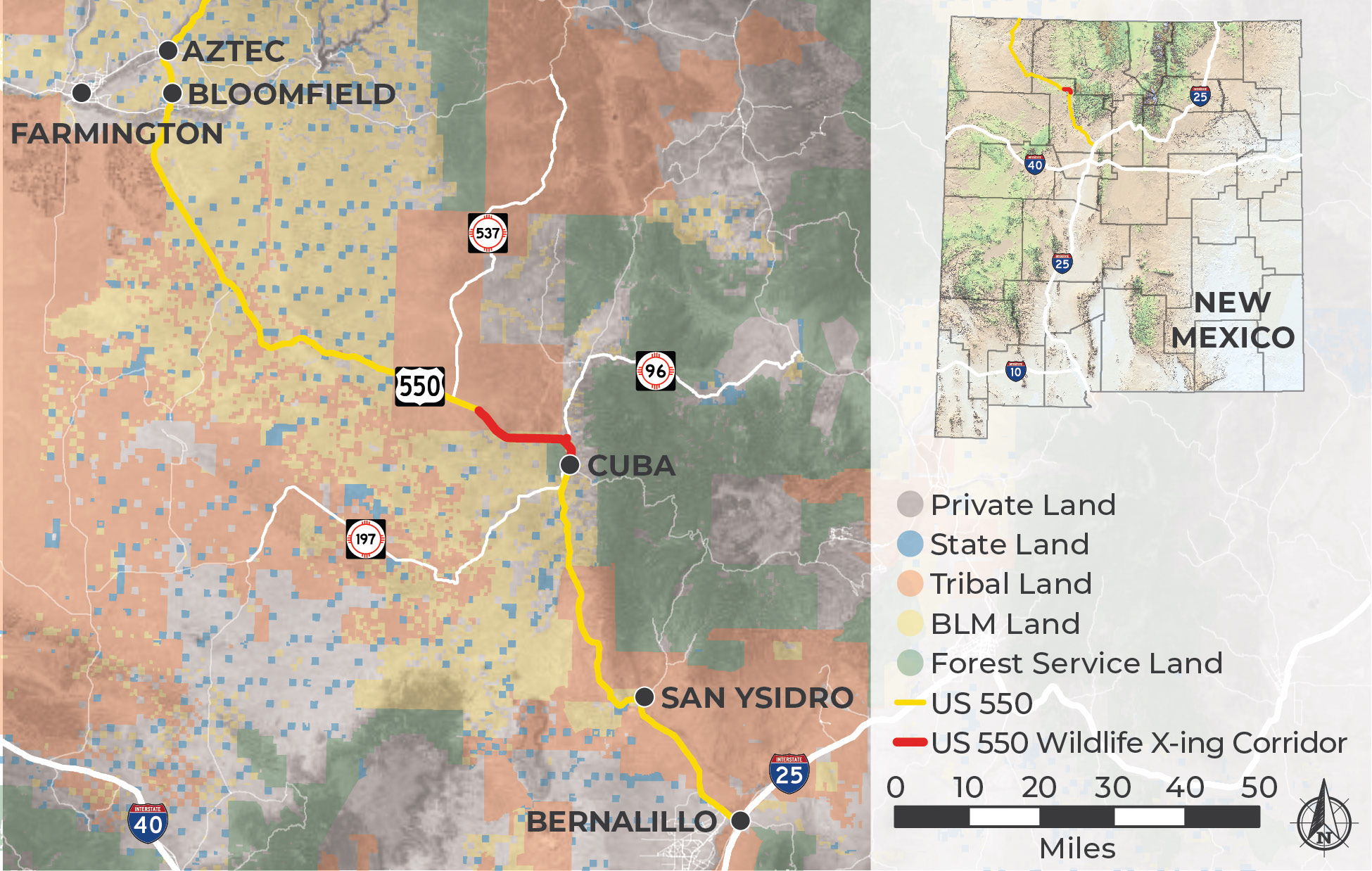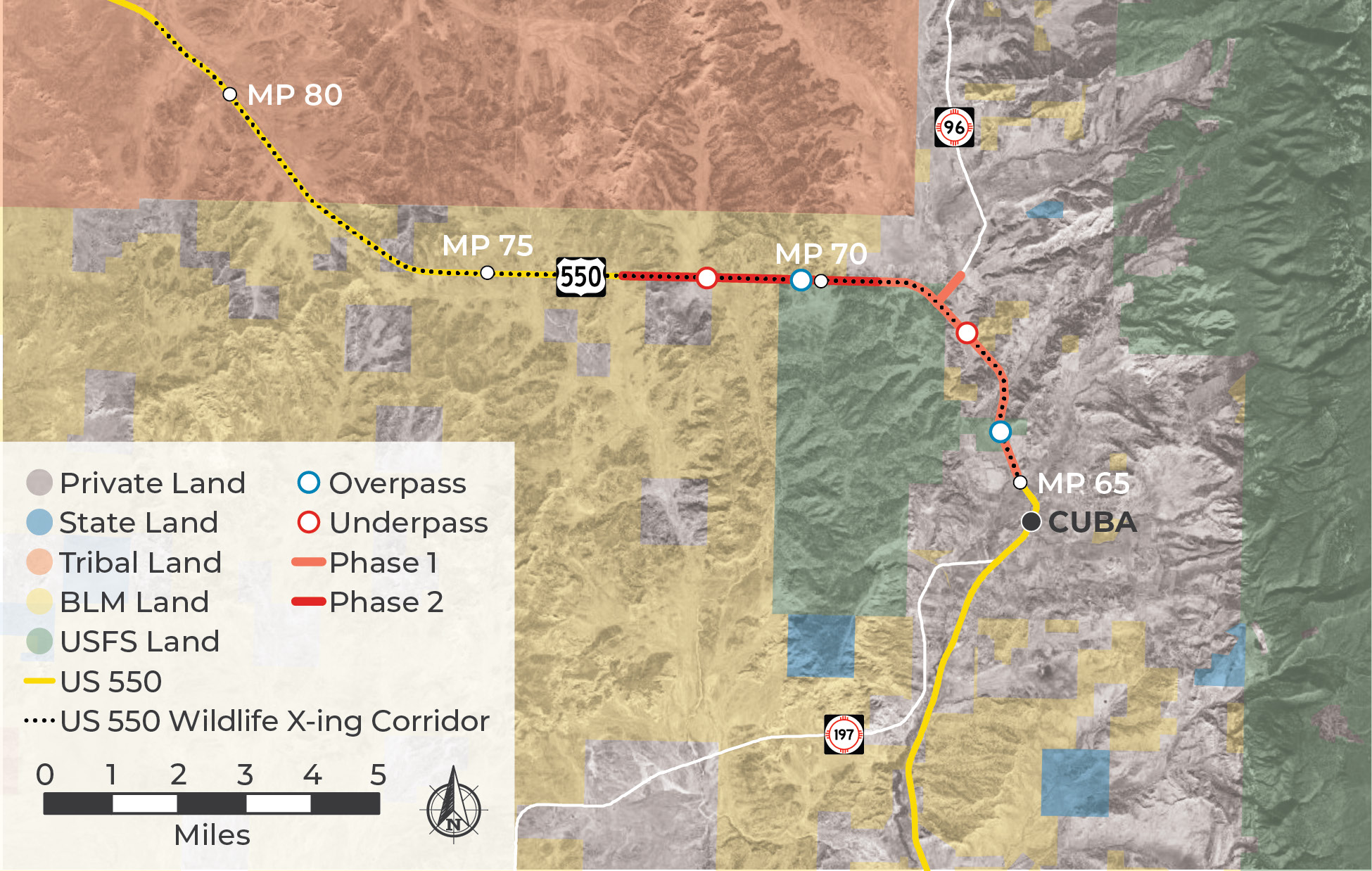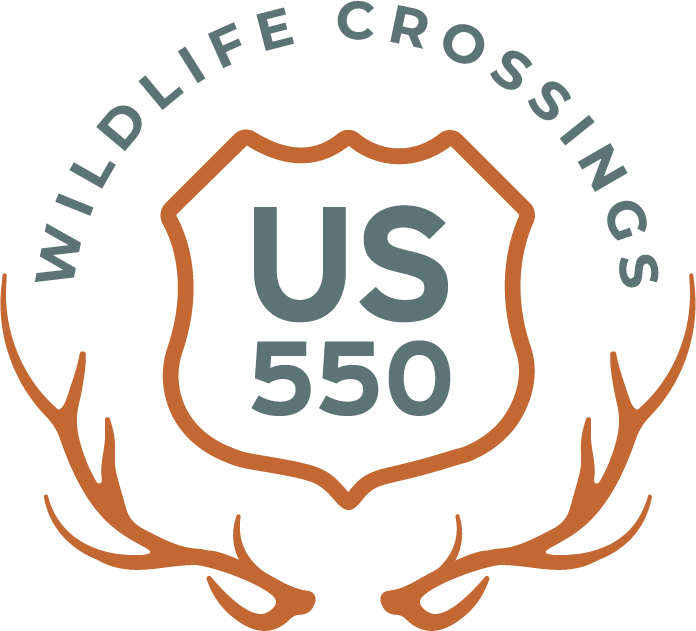
U.S. Highway 550 Wildlife Crossing Projects
Phases 1 and 2
Control Number 9901211
PROJECT OVERVIEW
The U.S. 550 Wildlife Crossings Project represents a proactive step in addressing the critical issue of Wildlife-Vehicle Collisions (WVCs) in New Mexico while promoting ecological balance. By targeting the stretch of U.S. Highway 550 north of Cuba—highlighted in the New Mexico Wildlife Corridors Action Plan as the state’s most severe WVC hotspot—this project prioritizes both human safety and wildlife conservation.
Key aspects of this initiative include:
- Focus Species: Primarily elk (Cervus canadensis) and mule deer (Odocoileus hemionus), which are frequent victims of collisions and key contributors to the ecosystem.
- Comprehensive Planning: The 2023 engineering scoping report outlines detailed plans for wildlife crossings, including identified locations, conceptual designs, and phased construction schedules.
- Challenges: The report addresses critical obstacles, including potential design and construction barriers, ensuring the feasibility of the project.
These efforts underline the NMDOT’s dedication to reducing WVCs while fostering habitat connectivity, which benefits not only wildlife but also public safety and ecological integrity.
Where are we in the Project Development Process?
The U.S. 550 Wildlife Crossing Project has been broken up into four construction phases. Currently, the NMDOT is developing design plans for Phases 1 and 2 (see Figure 2 below). It is anticipated that these plans will be completed by December 2025.
Figure 1. U.S. 550 Highway Project Location within New Mexico.
How did we get here?
Visit the NMDOT Wildlife Corridors Action Program Website to learn more about the approach taken to develop the Action Plan and the top WVC hotspots identified in New Mexico.
County
Sandoval
District
District 6
STIP Number
Status
Study and Design
Contact
James Hirsch
NMDOT Wildlife Coordinator
505-469-5535
PROJECT RESOURCES
U.S. 550 MP 64.93 to MP 80.64 Wildlife Vehicle Collision (WVC) Mitigation Scoping Report
Scoping Report, NMDOT July 2023
Determining Effectiveness of Wildlife-Vehicle Collision Mitigation Projects: Phase I
Final Report, NMDOT February 2021
New Mexico Wildlife Corridors Action Plan
Final Report, NMDOT June 2022
PHASE ONE
Phase 1 would involve the construction of an overpass at milepost (MP) 65.97, an underpass at MP 67.55, and 8-foot tall woven wire game fencing between MP 65.1 and MP 69.14. The game fence would prevent mule deer and elk from entering the roadway, and the wildlife overpasses and underpasses would provide an opportunity for safe wildlife passage.
PHASE TWO
Phase 2 would include the construction of a second overpass at MP 70.28, a second underpass at MP 71.81, and 8-foot tall woven wire game fencing between MP 69.14 and MP 72.98.
NEXT STEPS
The planning and design of Phases 1 and 2 started in early 2023 and the final design plans should be complete by the end of December 2025.
THE PRIMARY ELEMENTS OF WILDLIFE CROSSING CONSTRUCTION INCLUDE:
OVERPASS STRUCTURES
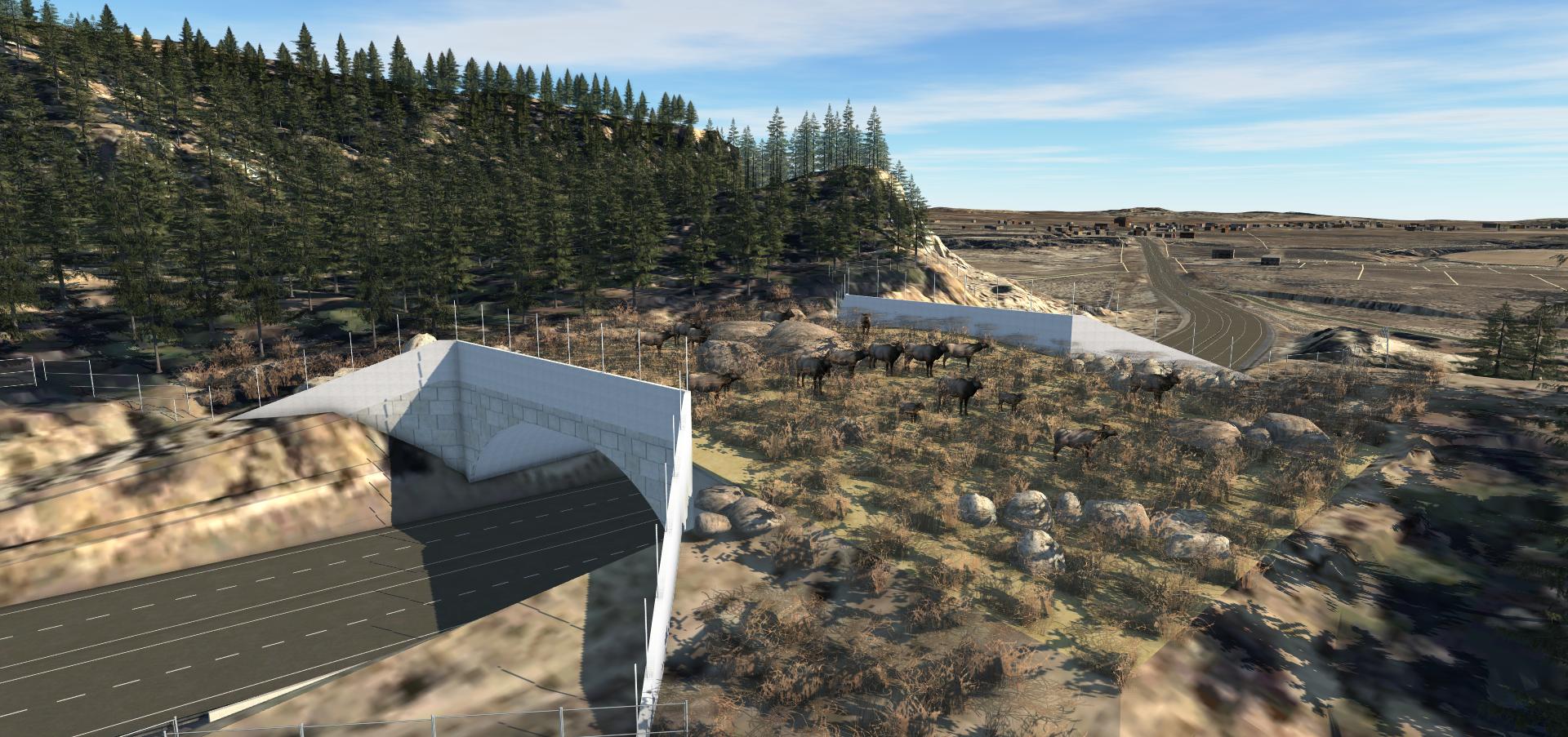
Single-span overpass structures would be constructed to bridge the existing four travel lanes and shoulders of US 550 with a 17-foot tall vertical clearance and 150-foot width. Overpasses and their approach areas would be planted with vegetation that matches the natural habitat adjacent to the highway.
UNDERPASS STRUCTURES
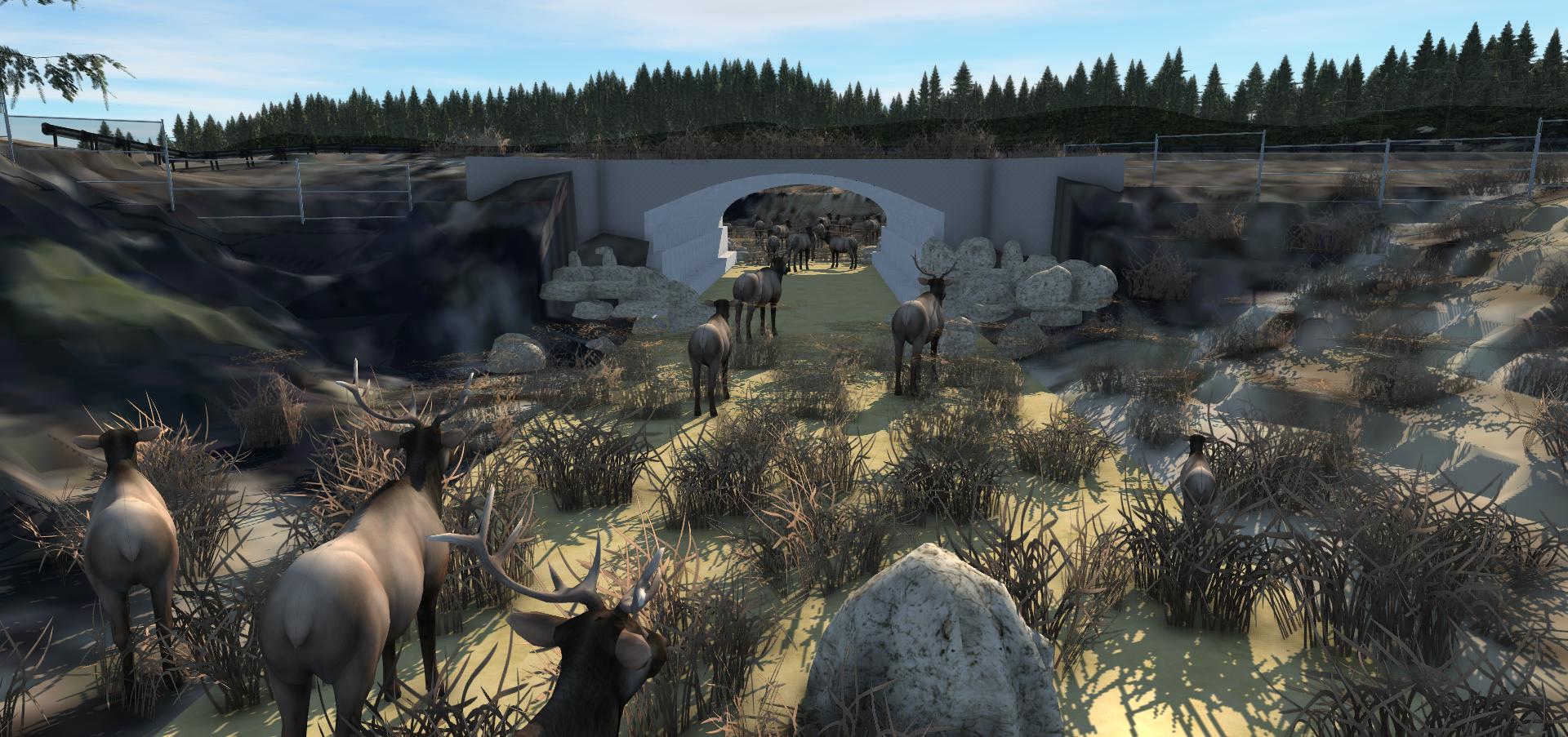
Underpass structures would be constructed using precast arch structures that are 54 feet wide and 11 feet tall. Arches would be placed on stem walls to create additional height to enhance openness, which is conducive to elk use. Fill slopes would be constructed to match the adjacent terrain. Approaches to the underpass would be planted with vegetation to match the adjacent natural habitat. To maintain existing drainage flows, improvements would be made as part of underpass construction.
GAME FENCING
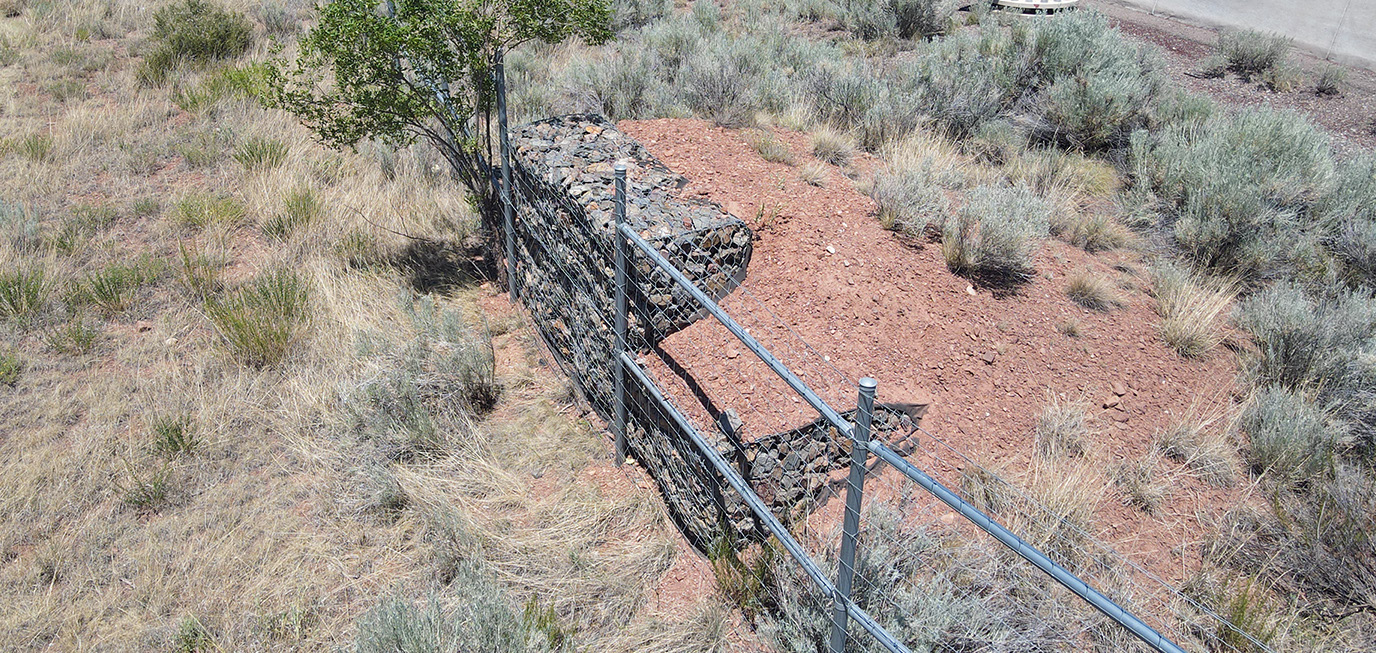
Eight-foot tall game fencing would be constructed along both sides of the U.S. 550 right-of-way and about one-half mile of NM 96 where it intersects with US 550 (near MP 68.1). Right-of-way fencing would also include escape ramps (jump-outs) to enable animals to exit if they are inadvertently trapped within the highway right-of-way.
GAME GUARD
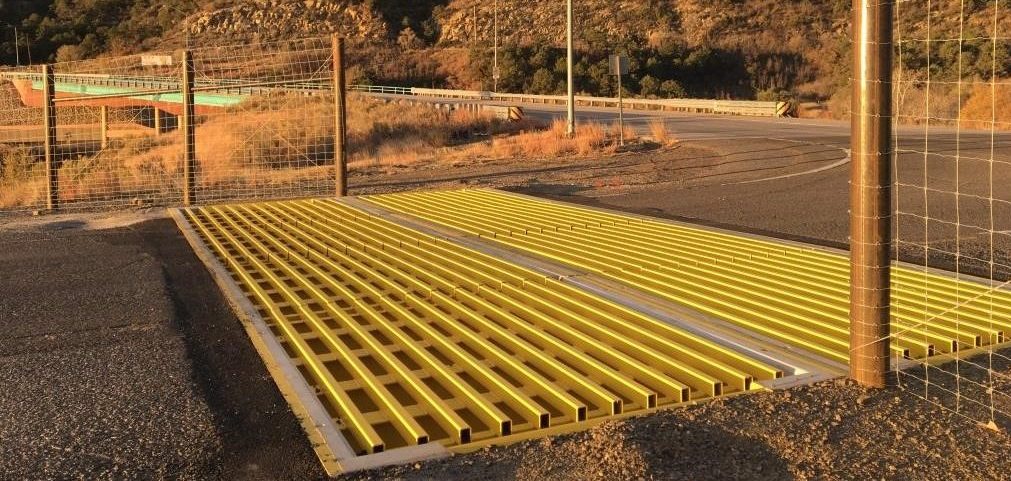
Game-guards would be placed at intersecting driveways and roads to facilitate vehicle movement while restricting animal access.

